Physical Computing
Fall 2017 | Professor: Garth Zeglin
Samples of various projects that combine digital coding and computational design with physical modeling.
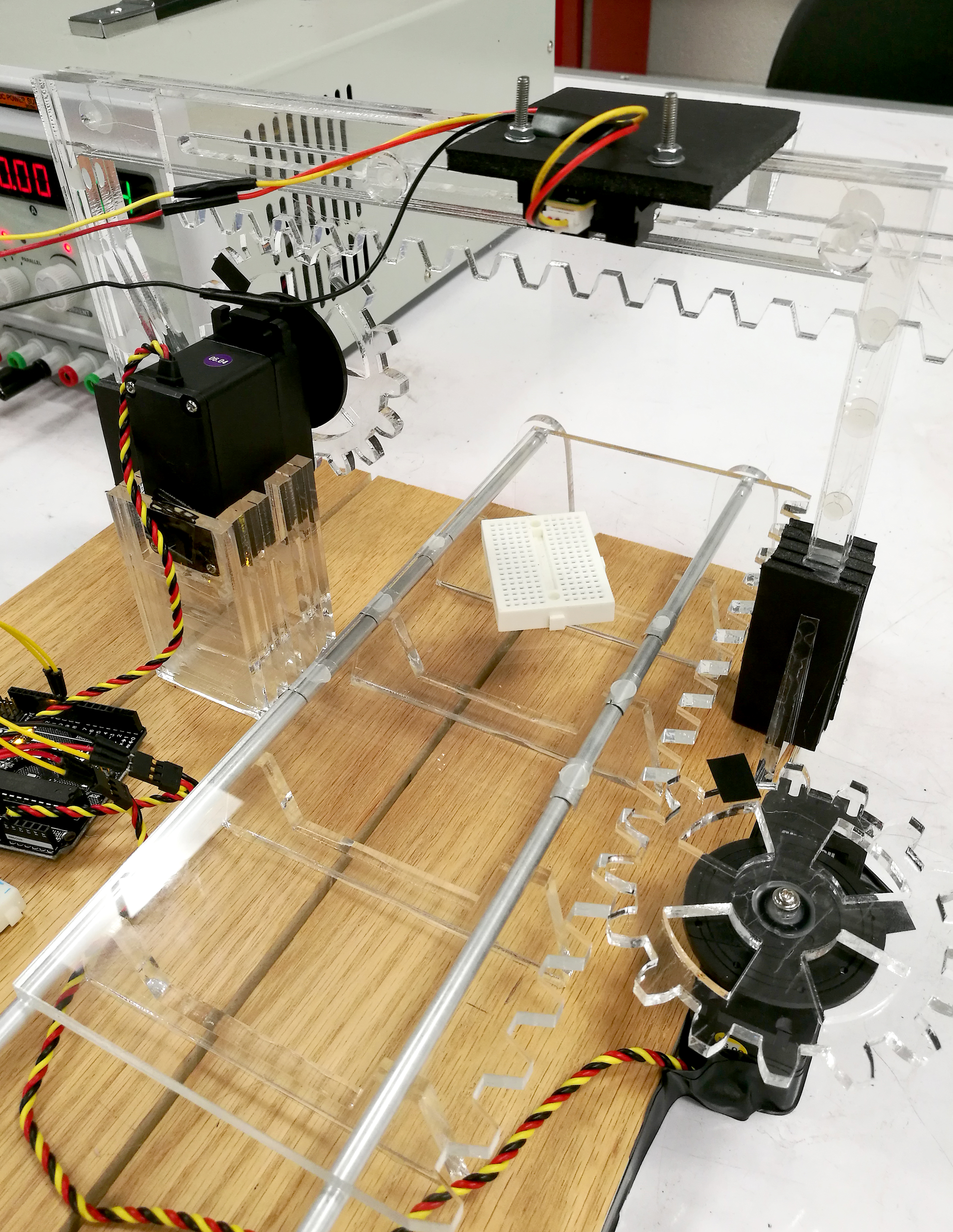
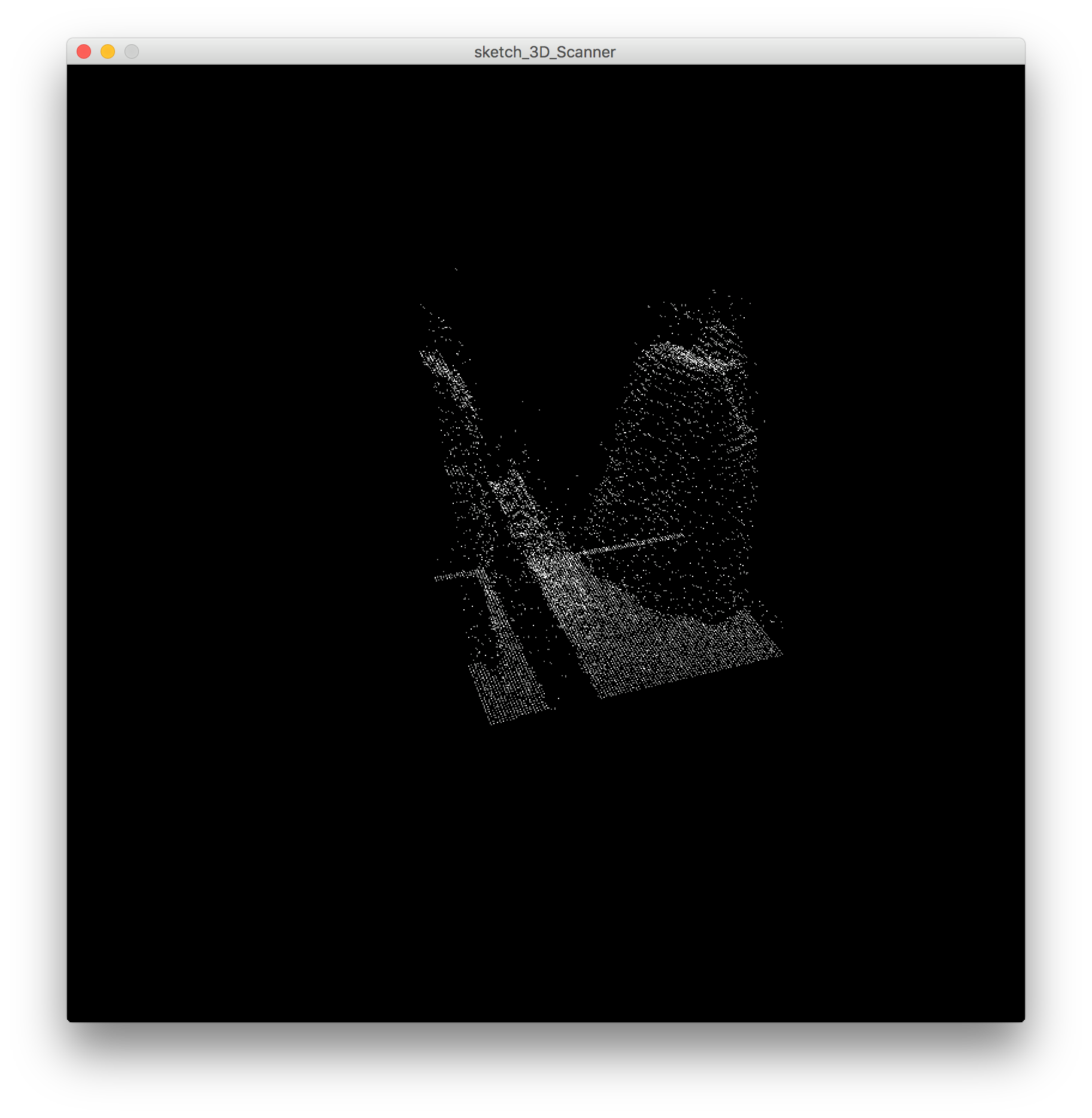
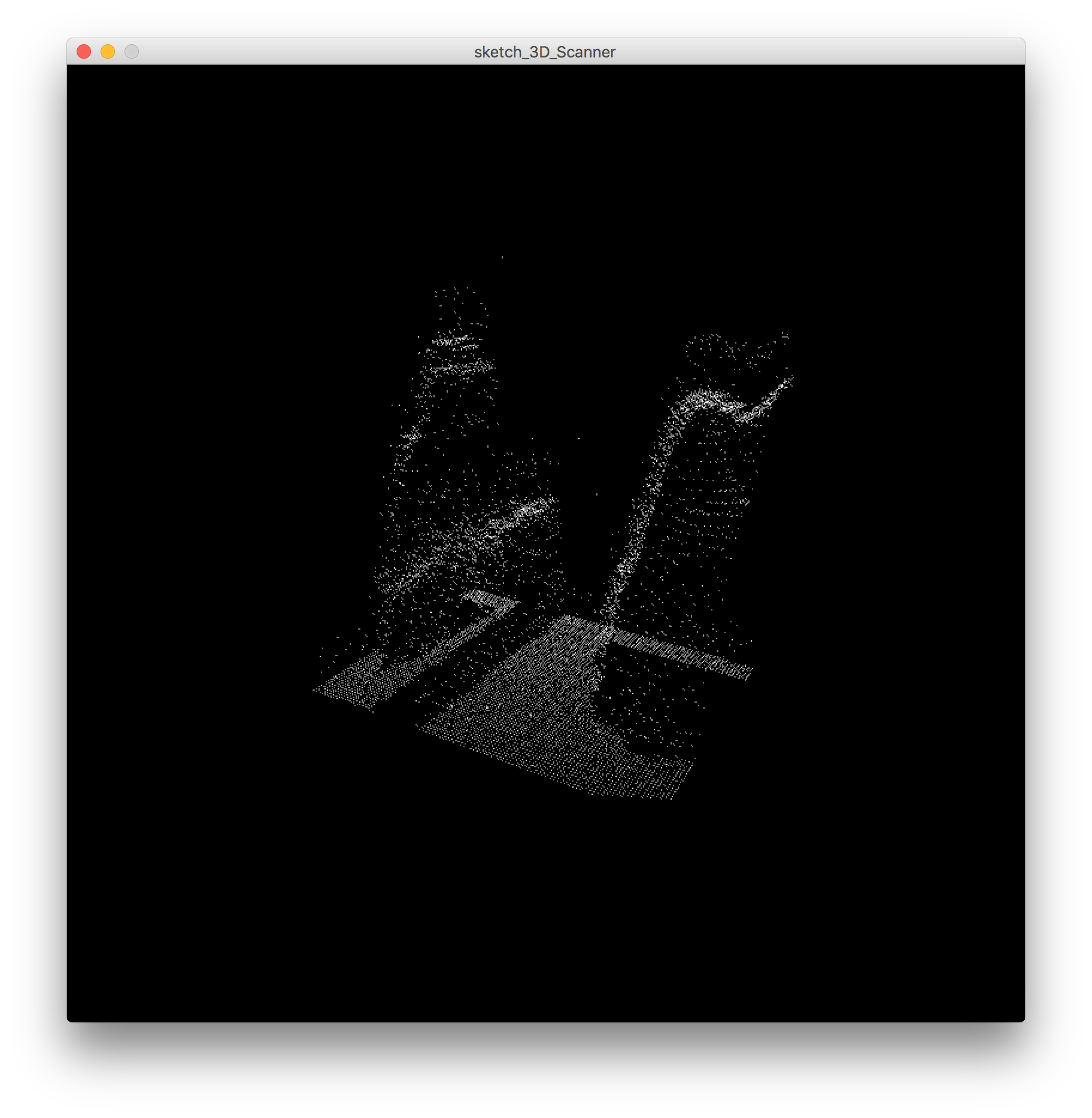

This was a short 3 week project to create a machine that could help us visualize items in digital space - a 3D scanner. To make a 3D scanner from scratch, we used infrared sensors and a motorized contraption to slowly collect a point cloud of information by slowly moving the object and sensor like a scanner would.
This involved both a computational and physical design development.
The comnputational design involved the scripting of the sensors and motors using arduino python coding and sketch 3d scanner plugin for visualization.
For the physical manifestation, a series of track and gears were created using acrylic to minimize friction for the motors to be able to move both the sensors and the scanning platform.
When combined a point cloud visualization can be created to successfully scan any objects placed on the scanning platform. In future development considerations for reflection, scanning accuracy, and motor strength for bigger items would be considered.
This involved both a computational and physical design development.
The comnputational design involved the scripting of the sensors and motors using arduino python coding and sketch 3d scanner plugin for visualization.
For the physical manifestation, a series of track and gears were created using acrylic to minimize friction for the motors to be able to move both the sensors and the scanning platform.
When combined a point cloud visualization can be created to successfully scan any objects placed on the scanning platform. In future development considerations for reflection, scanning accuracy, and motor strength for bigger items would be considered.

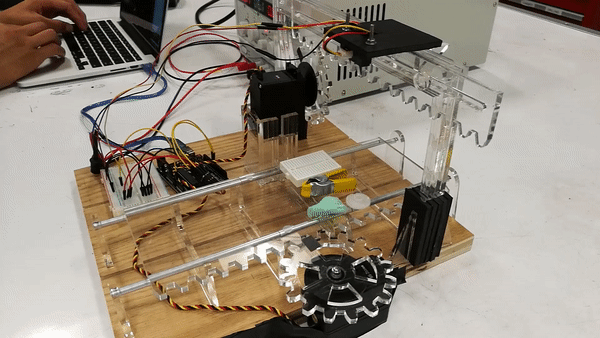
Fragment Project
Project Partner: Alessandra Fleck
For the final project of the semester, my partner and I developed an interactive sculpture installation for the Children’s Museum in Pittsburgh. During our first site visit, we were inspired by the beautiful glass facade at the entrance, and saw an opportunity for engagement and play at the seating steps. Given that the light filtered through the space throughout the day, we were inspired by create a light refracting sculpture that could respond to a child’s movement.
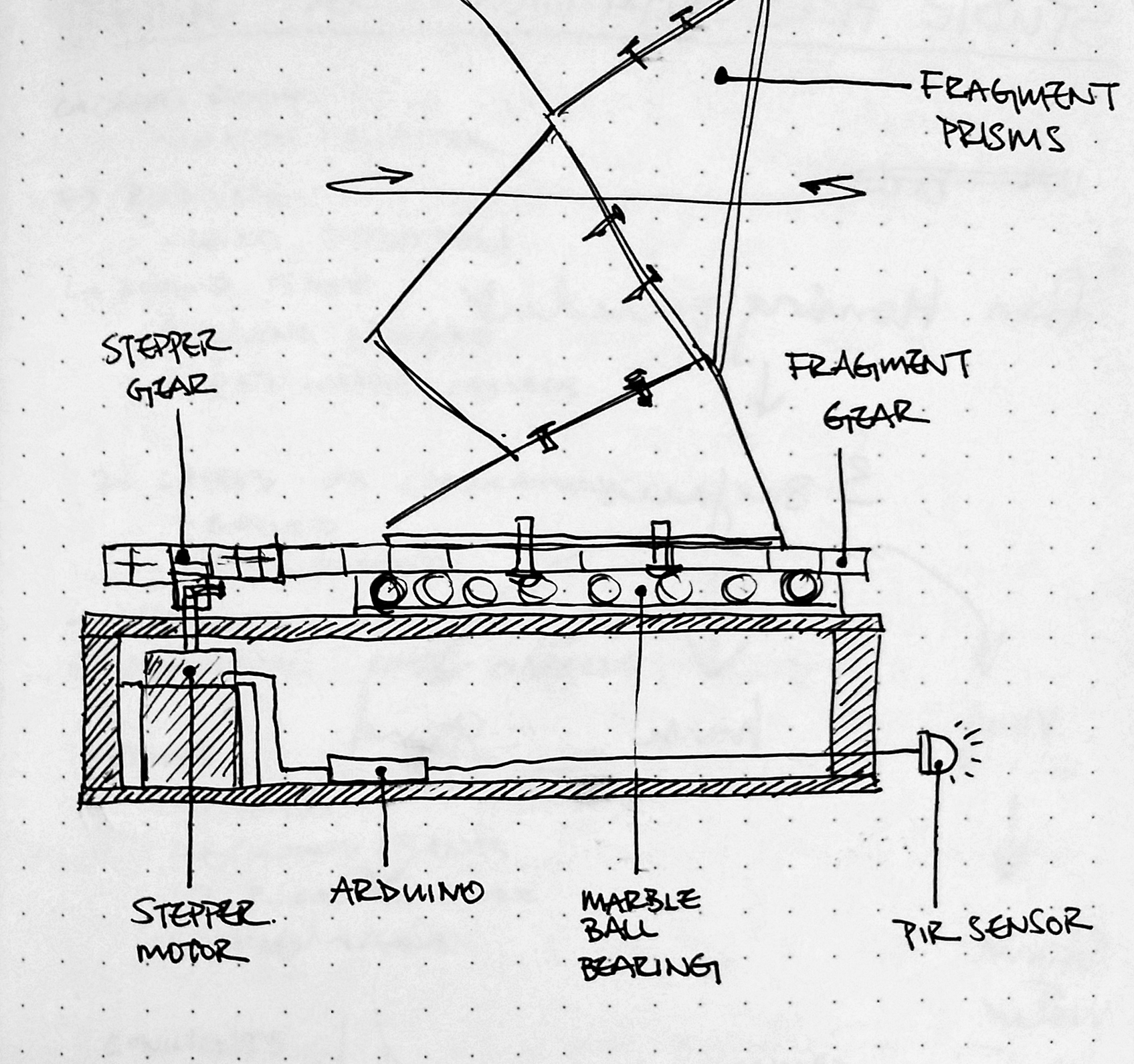
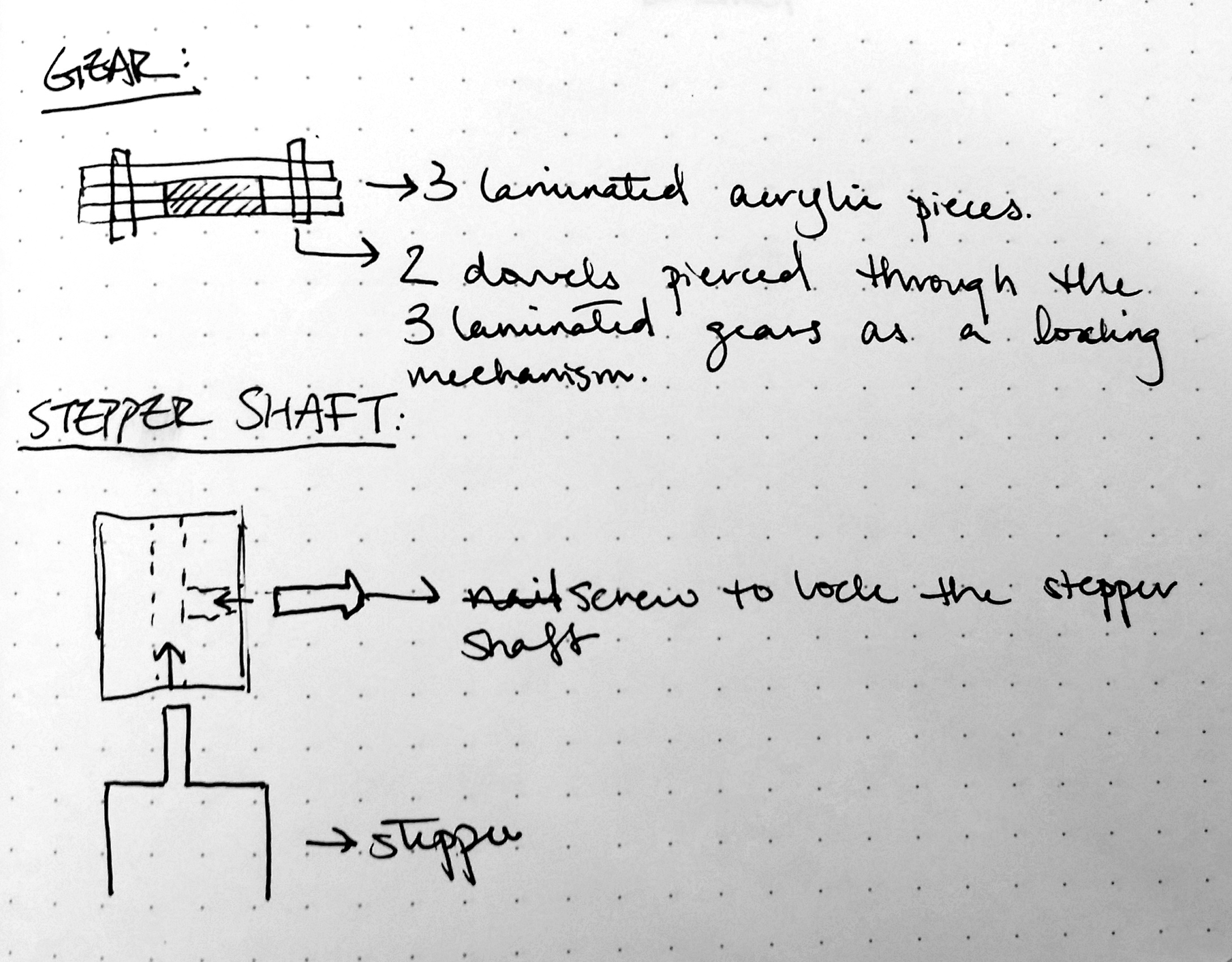
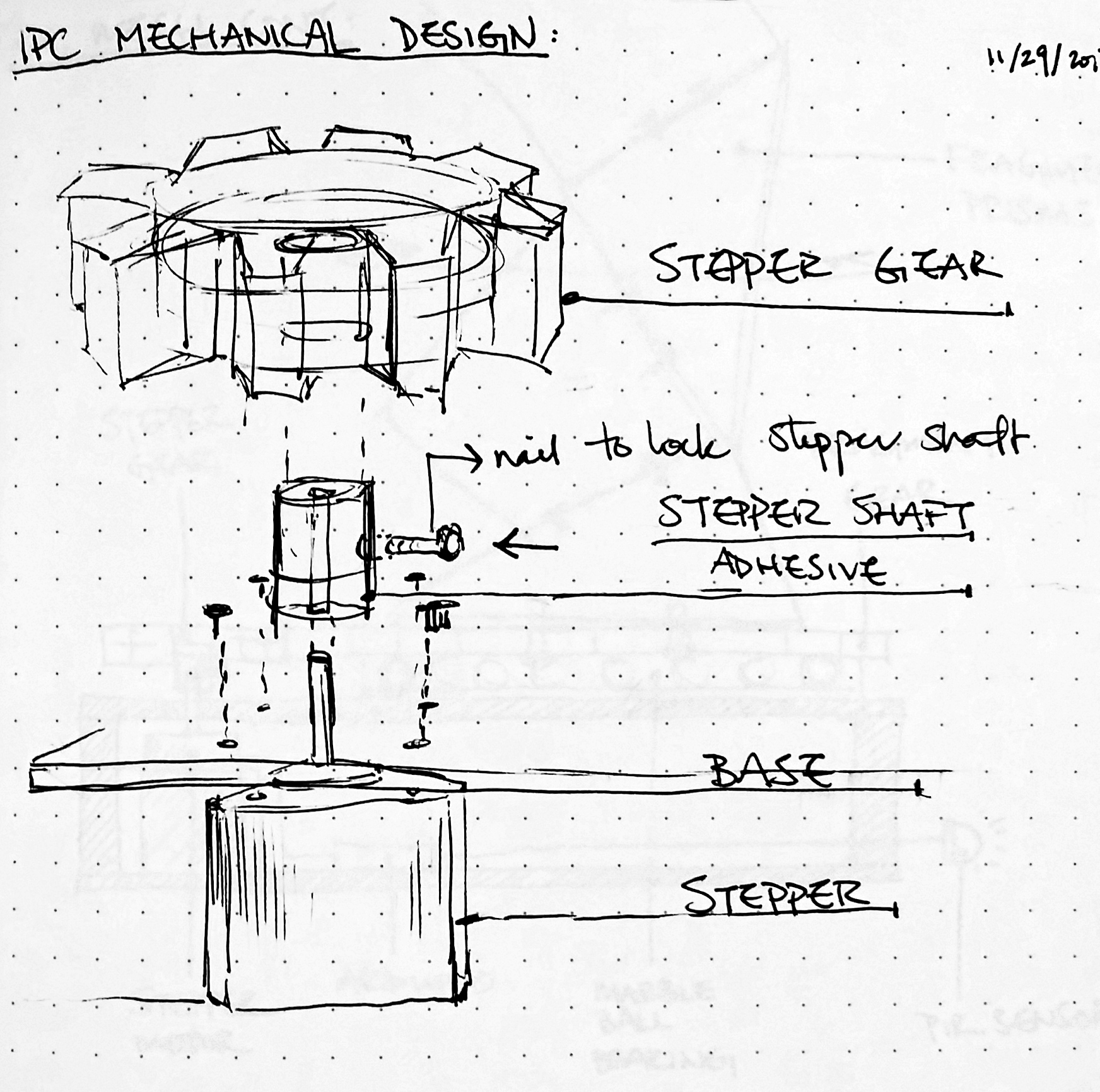


A series of gears are activated by a motor rotation to trigger an unit of gears to move based on the proximity of the children to the installation. The gears and light prisms are made out of clear and colored acrylics. These gears are fixed to a clear board (most likely thicker acrylic) along with arduinos and wiring to power the mechanics of the design.
The main technical challenge would be having a motor strong enough to turn the prisms attached to it, and also balancing the arrangement of the pieces and choosing the materials wisely so that light can pass through the right locations and allow for the lighting effects that we desire for this project.
The final installation resulted in our final sculptural piece, which rotated based on the proximity of people.
The main technical challenge would be having a motor strong enough to turn the prisms attached to it, and also balancing the arrangement of the pieces and choosing the materials wisely so that light can pass through the right locations and allow for the lighting effects that we desire for this project.
The final installation resulted in our final sculptural piece, which rotated based on the proximity of people.
